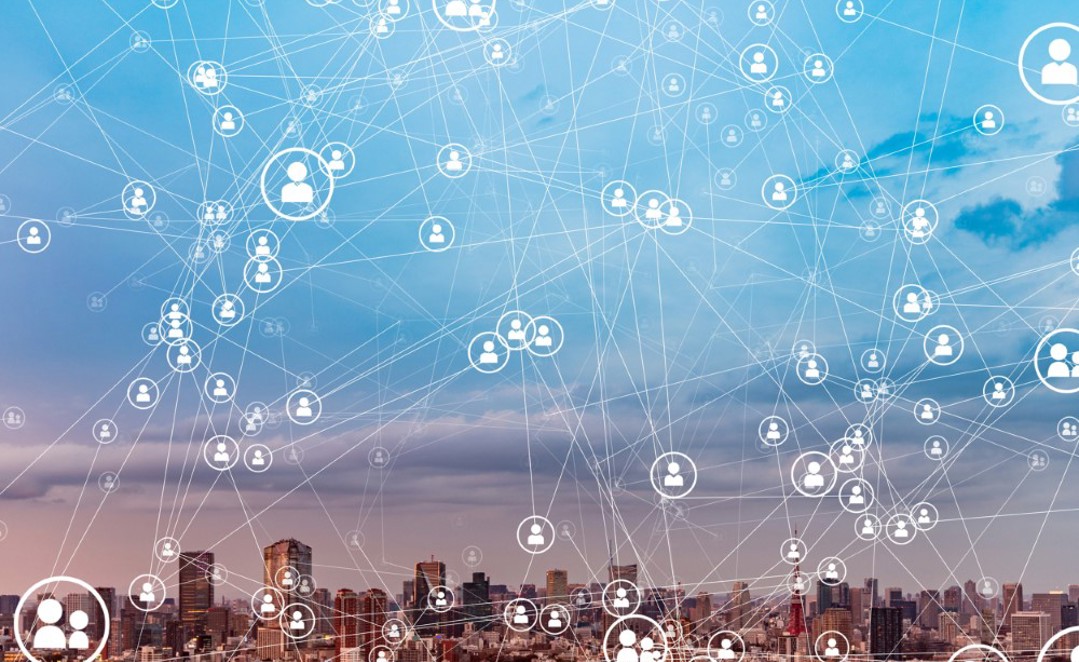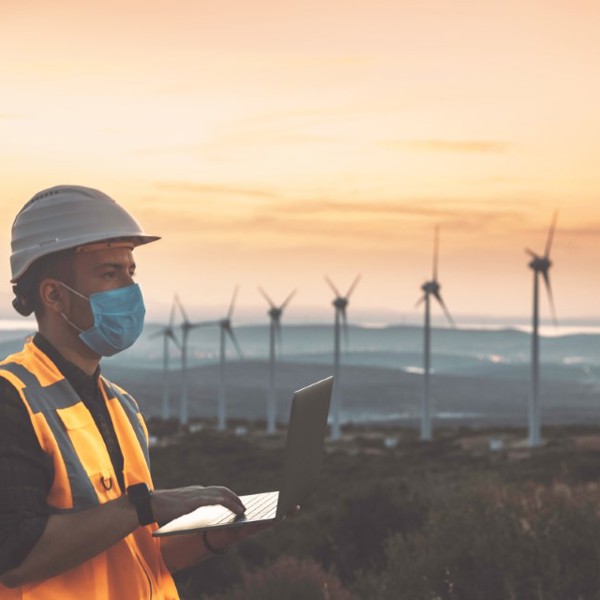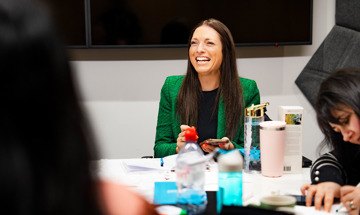One third of Europe’s workload could be performed remotely post-pandemic, according to a McKinsey & Company survey. In the UK, the figure is even higher at up to 46%, while more than half of UK workers surveyed said they had found a better work-life balance through homeworking.
The numbers point to a continuation of homeworking in some form even as COVID-19 restrictions ease, leaving businesses to consider permanent changes to the way they operate.
Homeworking is not for everyone or every role − as Centrica’s colleagues can attest − and it has created some significant challenges.
“Communication has become one of the biggest challenges due to COVID,” says Greg McKenna, MD of Centrica Business Solutions.
“The lack of interaction with our colleagues, the inability to meet them face to face and conduct informal conversations where information is passed around, decisions are made and you get to find out about things… that has been a real challenge.”
However, as well as challenges, the changes to the way we work have also created opportunities, especially when it comes to energy.
Disrupting energy patterns

The migration to online working – either by necessity or choice – means that offices are increasingly turning from commuter destinations to collaboration spaces for team meetings and specific events.
With the pre-pandemic nine-to-five working day no longer standard, energy consumption patterns have been disrupted, prompting individuals, businesses and providers to rethink their energy strategy.
As businesses analyse their changing energy use, they are more than ever focusing on how they can cut both costs and CO2 emissions.
“I think a lot of companies are looking at how through sustainability they can actually save money and make the company more efficient, while at the same time becoming better corporate citizens,” says Greg.
Harnessing the power of data
From small companies to major industrial facilities, many energy users are permanently changing their consumption habits after the pandemic. COVID-19 has reduced long-term global energy demand by 2.5 million barrels each day, according to S&P Global research, as people seek cleaner and more efficient energy.
“The way we relate to energy has changed forever,” says Geronimo Martinez, CEO and co-founder of Mexico-based digital energy specialist S2G Energy.
“There is a combination of energy efficiency, distributed power generation and electromobility that promises a new level of intensity in electric energy use. But also how the consumer is relating to that process is changing… in the large consumers, but also in everyday people’s lives.”
For Geronimo, whose company specialises in harnessing the power of data and the Internet of Things (IoT) to improve its customers’ energy efficiency, digital tools and analytics offer the way to best understand this changing relationship. He also believes that the data can clearly make the case for more sustainable energy use.
“There is a strong articulation of how energy efficiency can play out positively, for everybody looking to save money, to bring sustainability and, of course, to navigate the rough waters of the pandemic situation,“ says Geronimo.
Greg McKenna adds that, beyond COVID-19 and not just in the energy sector, harnessing the power of data can also help business leaders to be better prepared and more resilient in the future.
“We don’t know when the next crisis will be,” he says.
“But as business leaders, it’s important to remain agile, look at your processes, your systems and how you make decisions. Look at how you store data, how you access data and who has access to that data, so that you can make the right decisions and trust people to make the right decisions for you.”
Harnessing the power of data

2.5
COVID-19 has reduced long-term global energy demand by 2.5 million barrels each day
46%
of the UK's workload could be performed remotely
Distributed future
Company approaches to embracing clean energy solutions take many forms. For example, one forward-thinking solution is to install charging points for electric vehicles in the homes of employees. Combined with energy distribution software, company car and vehicle batteries can be charged at optimal times to increase clean energy use and avoid times of peak demand.
The ever-falling cost of renewable energy technologies, particularly wind and solar, has seen more companies adopting on-site generating capacity to power their operations and generate additional revenue. “We’re seeing many more conversations around energy optimisation, and distributed energy, how you can produce your own energy on site, and then how you can make money from surplus energy that can be exported back to the grid,” says Greg.
Working with Centrica, floor manufacturer Tarkett has installed a tri-generation power system at its manufacturing plant in Italy, to generate the electricity and thermal heat needed to produce linoleum. Solar energy systems add on-site clean generating capacity, and a recent feasibility study looked at adding wind power to the energy mix, further extending reliance on renewables.
“We analysed the entire lifecycle of the linoleum we produce, from extraction of raw materials to processing, installation and recycling of materials,” says Federica Meloni, Energy Manager at flooring manufacturer Tarkett.
“This life-cycle environmental assessment helps us minimise the carbon footprint of our flooring.”A closed-loop recycling programme helps reuse waste linoleum from production and from customers, either as raw materials for new flooring or as a fuel source.
“Our Restart programme gives new life to scraps, which are used to produce new linoleum products and also our own biomass to generate internal renewable thermal energy,” Meloni explains.
Tarkett holds sustainability as one of its key operational pillars. As it did at many businesses, the pandemic led to a remodelling of work practices and energy usage, with renewed focus on reducing electricity and thermal energy from plant operations, particularly when lockdown brought flooring production to a halt.
Amid calls to build back better, companies that look ahead and adapt to the coming energy-efficient, post-COVID world will be well placed to make a difference, both to the environment and to their bottom line.
“There is a strong articulation of how energy efficiency can play out positively, for everybody looking to save money, to bring sustainability and, of course, to navigate the rough waters of the pandemic situation,“
Geronimo Martinez, CEO and co-founder S2G Energy

Case Study
Centrica's Market Leading Commitment to Trans Inclusion
Our people

Case Study
Chris O'Shea: The Employment Rights Bill will be good for business.
Our people

Case Study
In conversation with... Victoria Belkhyate
Our people

Case Study
Meet the Fathers of Centrica
Our people

Case Study
Black History Month: Reclaiming Narratives
Our people

Case Study
The Working Parents of Centrica
Our people

